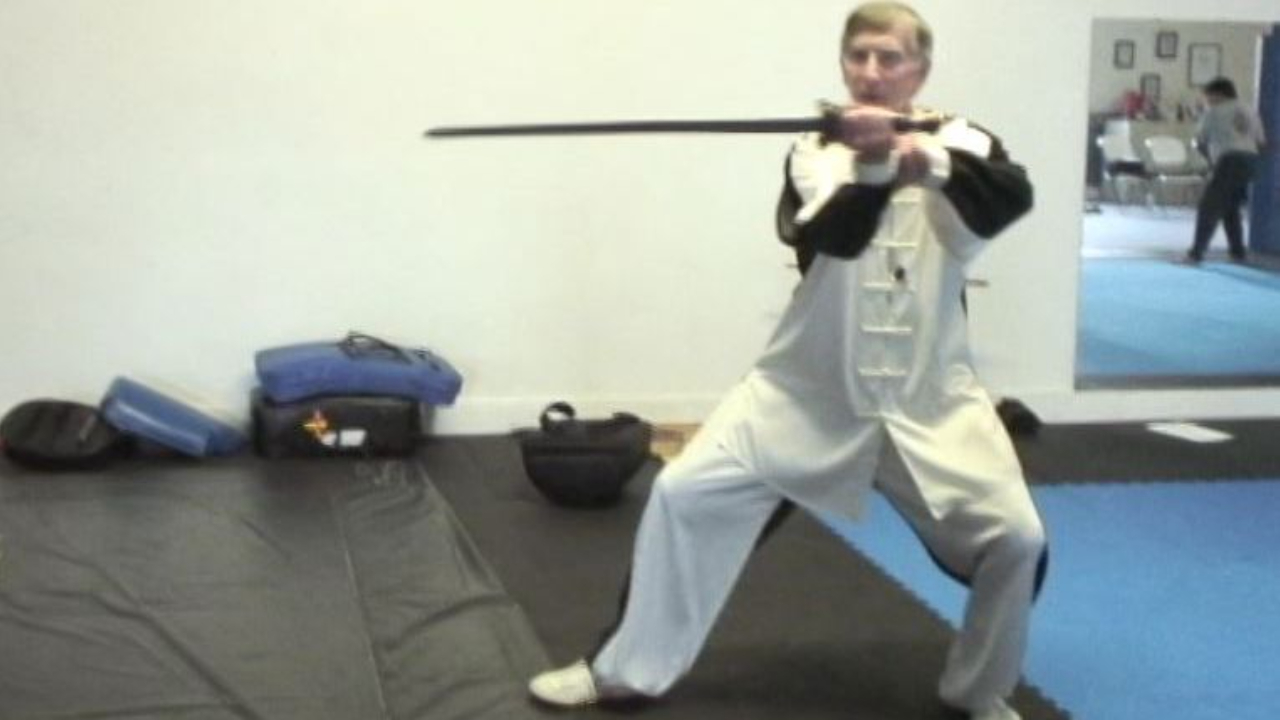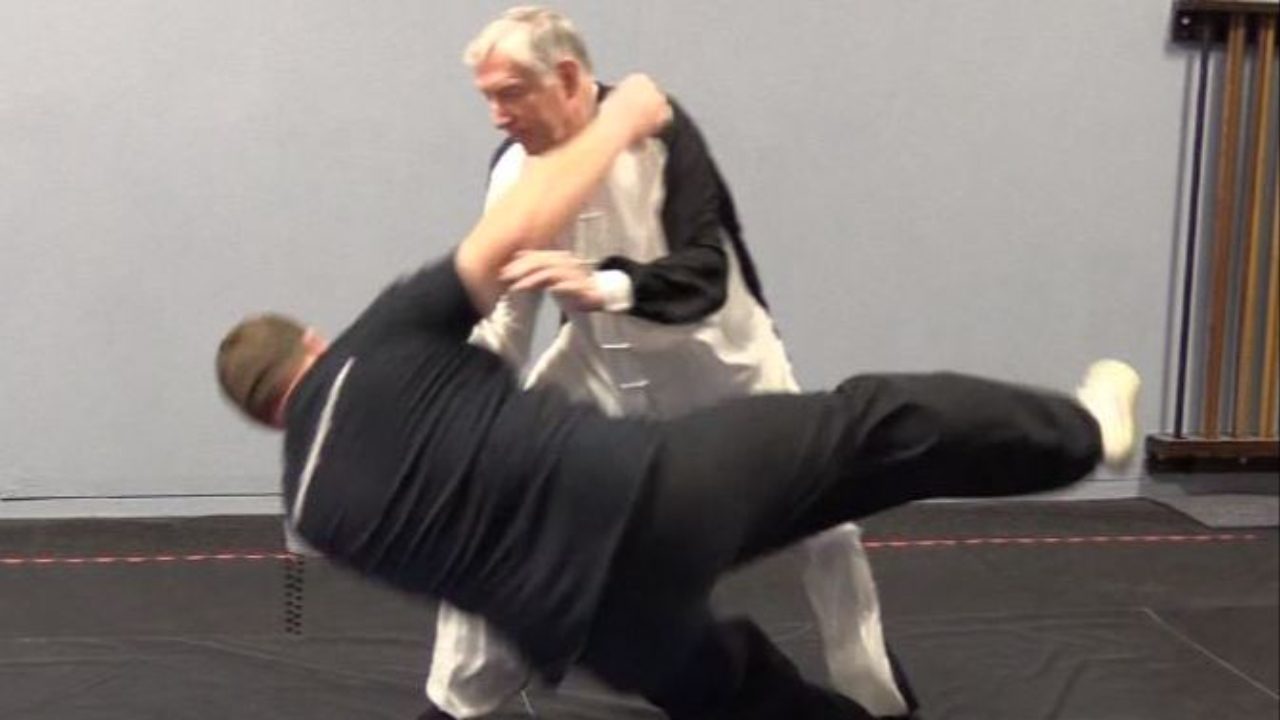Bruce Lee Was My Hero -- But He Was Wrong About One Thing

Bruce Lee was the final spark that I needed in 1973. At age 20, I saw "The Chinese Connection" and then "Enter the Dragon" and decided that I had to begin studying kung-fu. I had been a fan of the Kung-Fu TV show, but it was Bruce Lee -- the beauty of his movement and the power of his techniques -- that made me enroll in a class.
Bruce Lee changed my life.
Bruce Lee said that forms are dead and classical styles are useless.
Bruce Lee was dead wrong.
He died at the age of 32. That's pretty young. When I was 32, I didn't like forms. I didn't want to practice them and focused on sparring and fighting techniques. As a result, I did very well in sparring but just couldn't see the point of forms. In fact, I went to several tournaments before the age of 32 and never competed in forms.
So I can understand where Bruce was coming from. He was a young, opinionated guy -- extremely talented and a tr...
The Power of Habit and How It Helps Your Bagua, Tai Chi and Hsing-I

A new member of my membership website was asking about fighting with Bagua. He is new to the art and wants more material on Bagua fighting.
I have been shooting videos recently to boost the online content in this area, but I reminded the young man that before he learns to fight with Bagua, there are many other things to practice -- namely, the basics.
Anyone can throw a palm technique or do a joint lock and takedown. Doing it properly according to the body mechanics of a particular art is the difficult part. You can't breeze through the basics and expect to use the art.
Interesting research on the brain shows that we develop habits when they become ingrained in our basal ganglia, a cluster of brain cells that stores habitual acts and behaviors.
According to the book "The Power of Habit," you can put a mouse in a maze with a piece of cheese at the end. If you hook electrodes to the mouse's brain and wa...
Maintain Internal Strength - Ground and Peng - While Walking

Chen Xiaowang says that peng jin is like revving the engine of a car. If you lift the car off the ground and rev the engine, the car goes nowhere. Put it down so that it connects to the ground and it has power.
I had a teacher who said "you can hold stances all day, but if you lose your structure the moment you begin moving, you fail."
Establishing the ground path is a skill I learned from a two or three people I respect in the internal arts -- Mike Sigman, and Jim and Angela Criscimagna. Sigman was one of the first to really drive these skills home, and as a thank-you, much of the tai chi community flamed him for it, because they hadn't been taught these skills (particularly the "softer" tai chi practitioners) so they couldn't imagine that their teachers hadn't taught them the Real Thing.
In Chen tai chi, the most important skill is to maintain peng at all times -- an outward expansiveness in your body structure and movement. Peng jin is part of every movement and each of the tai...
A Martial Arts Master or a Teacher -- You Don't Have to Be One to Be the Other

She said my Internal Strength and Silk-Reeling videos taught her information that her "master" never taught. In the email, she said "Thank you, Master."
I corrected her and told her I'm not a master and don't have enough time in this lifetime to become one.
Her response was interesting. She said she had studied DVDs by several Chen masters (she named them but I won't do that here) -- and she said that I was the only one teaching body mechanics in any detail. She found it curious that the masters she had seen on video and in person never told her any of the information I share. She said that many of the teachers she knew in martial arts demand to be called Master, and I don't, yet I teach quality material to everyone.
Her email was very kind, and we had some very nice exchanges. It also made me think, which is dangerous but ...
Do This the Next Time You Practice Fighting Applications

I was sent a YouTube link a few weeks ago showing a Bagua instructor doing fighting applications against a student. The student stepped and punched, and the instructor did all sorts of fancy, twisting movements -- sometimes two or three techniques that included takedowns and joint locks -- all while the student didn't fight back. Usually the student did one punch and basically stood there.
Now, I've done a lot of fighting applications on video. Usually, they're done to instruct, so you slow it down and show how it's done. I'm also a fan of practicing principles of movement.
But most of the fighting applications I practice, and the ones I put on video, are applications that work in a real situation. It's NOT a real situation for an attacker to stand with his arm outstretched in a punch position while you do two or three techniques. I don't care if you're practicing TKD, Shotokan, Aikido, Tai Chi, or Bagua.
My students and I over the years have rejected techniques because -- even thou...
A Fun Workshop on the Chen Taiji Straight Sword Form

Last Saturday in Moline, Illinois, I conducted a four-hour workshop on the Chen Tai Chi Straight Sword Form. The form has 49 movements, so it was a challenge to teach each movement and include quality information about body mechanics and the applications for the movements. But with a hard-working group, we did it.
The sword form is a great Taiji form -- smooth and powerful, it can be done slowly or fast with fa-jing. Always, the internal body mechanics should be present:
- Establishing and maintaining the ground path
- Maintaining peng at all times
- Using whole-body movement
- Silk-Reeling energy
- Opening/closing the kua properly
- Dan T'ien rotation
I've heard instructors in the past talk about "extending your chi to the end of the sword." And for those who have their heads in fantasy, that confuses things.
The "intent" of each movement in a Tai Chi form is its fighting application and how you are using the body mechanics against an opponent. By utilizing the body mechanics l...
A Life-Changing Book for All Martial Artists and Human Beings

I grew up in a fundamentalist Christian church, with a fundamentalist Christian mom. I was told from the day I was born that I believed in Jesus Christ as our Savior, and I didn't question it.
Until I saw the Kung Fu TV show around 1972. I started watching for the kung-fu fighting, but found myself drawn to the flashbacks -- the morality tales with the wonderful monks teaching Young Caine valuable lessons. The monks were Master Kan, played by the wonderful Philip Ahn, and the blind Master Po, played by Hollywood veteran Keye Luke (who played "Number One Son" in Charlie Chan movies in the 1930s).
The lessons were soothing and thought-provoking. When Caine questioned his own bravery, Master Kan said, "The deer runs from the lion. It is not cowardice. It is the love of life."
When Young Caine and another young monk-to-be were robbed by a con man on the way to town, Master Kan asked the other young man what he learned from the ordeal. "Never trust anyone," the young man said angrily. ...
Where Traditional Arts Fall Short - Unrealistic Expectations

I've been involved in martial arts since 1973. I've worked on a lot of techniques and have done a lot of tournament sparring. Most of it has been "no-contact" or "light contact," although most of us who have done this know that there is a lot of contact, and it takes self-control to avoid excessive contact.
The skills that it takes to beat a black belt who is trying to punch and kick you are some of the same skills it takes to win on the street. I was in enough fights growing up to know. But at that time, I wasn't as knowledgeable as I became later. Fighting was always hard, but I always sort-of enjoyed it. I stood up to a lot of bullies over the years. Once a fight started, you never really knew what to expect. There was something I loved about that type of pressure. It was real life. And sometimes the smartest guy won, not just the toughest.
Traditional martial arts taught me a lot. In the beginning, I had the false confidence of a beginner, thinking I knew more than I did. As I go...
How to Use Intent in Tai Chi, Hsing-I and Bagua

I received an interesting email from a member of the online internal arts school last week asking what does it mean to use intent in Taiji. Like a lot of members, he's using the online material to supplement training under another teacher. It became apparent that an instructor had made intent appear mystical.
He asked if, when establishing the ground path, if it's physical or if you are using Mind Intent?
After giving him my take on the subject, I then did some research to see what other instructors say. As I expected, the term Intent is shrouded in abstract terms and descriptions, in Taoism and Buddhism. One well-known "master" writes about it in such an abstract way that you'd need a Ph.D in Philosophy to understand it, then he asks for nearly a hundred bucks.
Let me put it simply -- the question is "what is intent when doing any internal movement?"
You can make it as flowery and abstract as you want, but the bottom line is this: the intent of the movement depends upon the marti...
Butt Out -- What it Means to "Tuck the Tailbone" in Taijiquan

In the practice of the internal arts, you're supposed to relax the hips. Sometimes it is said that you should "tuck the tailbone."
I prefer to use a different description.
Relax the lower back.
Here are two photos. The first one shows a common posture that I see in beginning students -- the butt sticks out in postures such as Single Whip.The second photo shows a more "centered" tailbone. The lower back is relaxed.
When most of us stand up, our lower backs are tense. They are concave, bowing inward toward the navel. But when you work on the body mechanics that are essential for quality internal arts (Taiji, Xingyi and Bagua) you learn to relax the lower back.
When I teach this, I have students put a hand firmly on my lower back. I stand normally. They can feel it bow inward. Then I relax and the lower back "fills up." At the same time, the hips drop down and inward. By relaxing the lower back, you are "tucking the hips," and no tension is required.
Relaxing the lower back is ...
